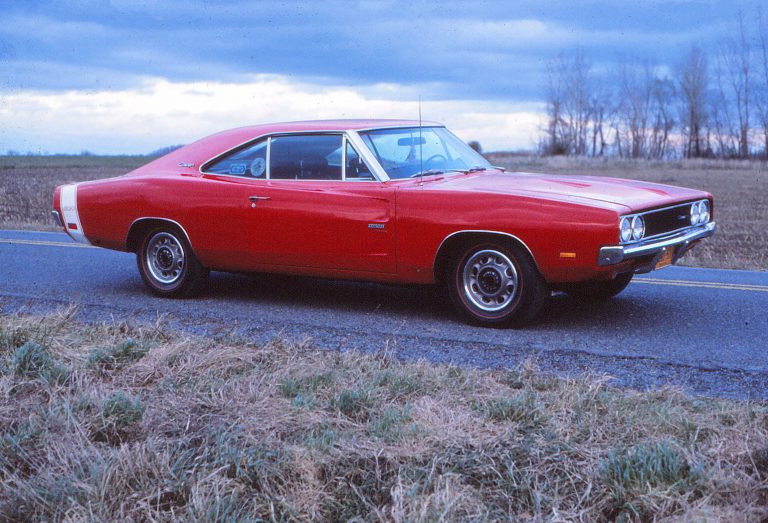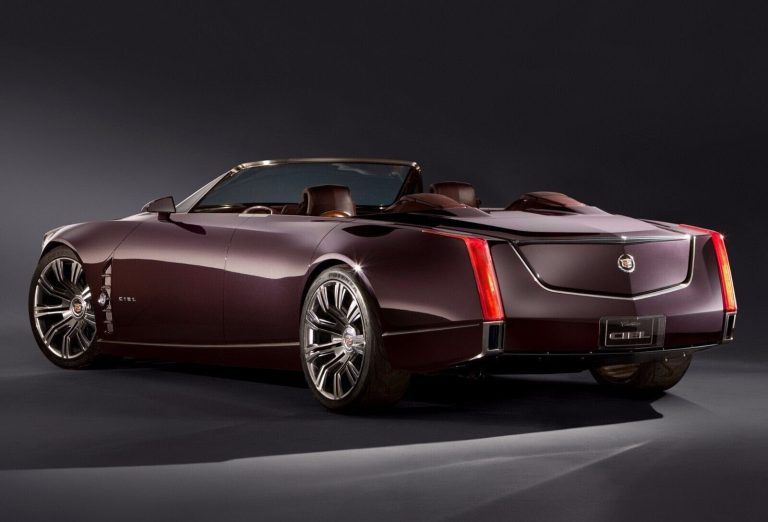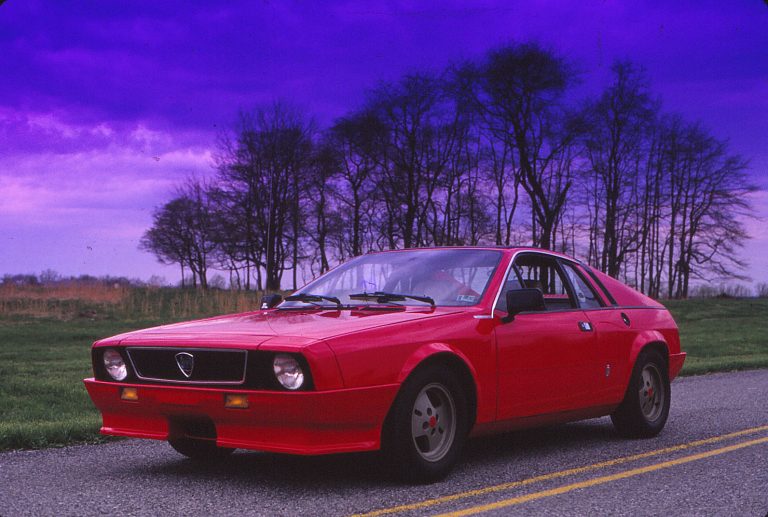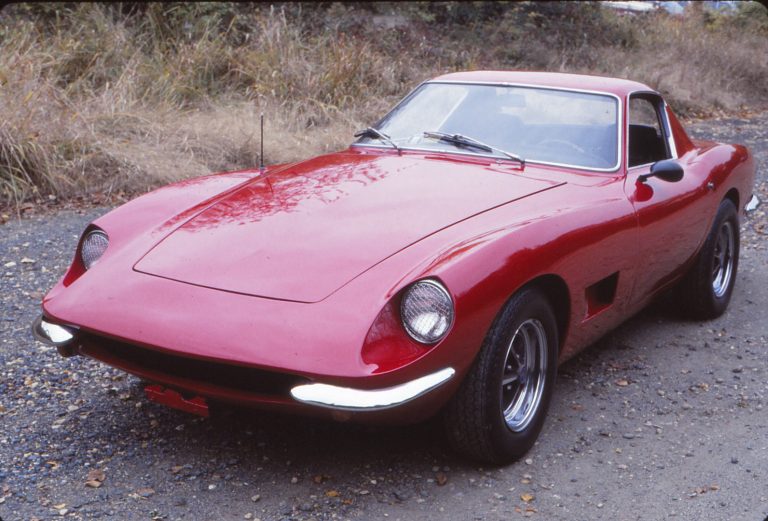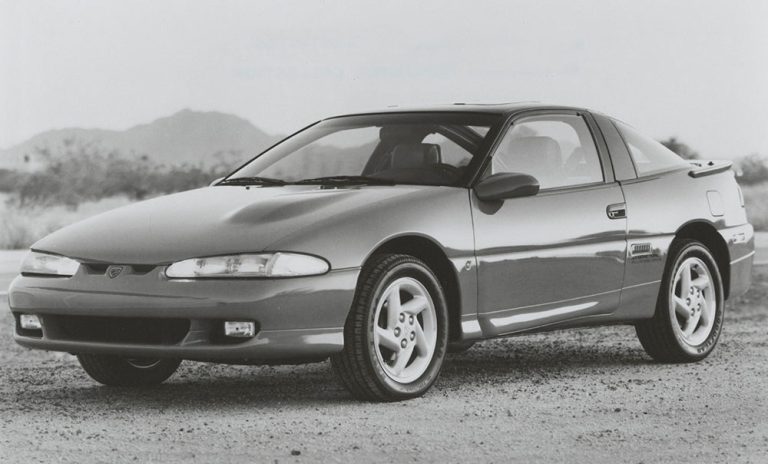Originally published in AutoWeek, July 11, 1983
1971 Plymouth Barracuda Hemi ‘Cuda; Photos by John Matras
Paranoid.
That’s what a 1971 Plymouth Barracuda Hemi’ Cuda makes you. Paranoid.
You carefully scan the road ahead, alert for the telltale roof-mounted light bar. You watch the mirrors to see if there is a police car behind you. You check the cross streets as you pass, and examine the car alongside at a stoplight for tiny hubcaps and the blue-serged occupant of a plain wrapper. The Man is everywhere. Or at least he could be.
And he can certainly see you. Everyone can see you. Phosphorescent chartreuse paint has a way of doing that. The Hemi ‘Cuda is covered in it.
Of course, to some people the glow-in-the-dark paint screams Race Me. The paint, along with the black “shaker” scoop and the four block letters on the rear fenders, is an arrogant standing challenge to the courageous. But to the police the car simply says Arrest Me. A lime green Hemi ‘Cuda is a moving violation even when sitting still. Chrysler called a “high impact” color. No wonder driving the car makes you paranoid.
But go ahead. Slip behind the wheel of Mike McGuire’s 1971 Plymouth Hemi ‘Cuda. Hmmmm. Tach is yellow-lined at five grand, red at five and a half. But look at that speedo, all the way to 150 mph. Never mind that the car is geared so that the last third will never be used.
Small gauges include fuel, temperature, ammeter, oil pressure and clock, all tucked behind a heavily browed dash. Under the dash are two crude levers, one for the manual choke and one to open the air scoop. Rising from the console is Hurst shifter with a hyper-macho pistol grip. Wrap your mitt around that.
The bucket seats, however, are the typical Detroit slabs of the era. No lateral support here. The back seat is a dark cave of orthopedic torture.
The back seat, however, is another story. What we’re concerned with here is driving. So start it up. It fires easily, albeit roughly when the engine is cold. The exhaust has that tinny high-compression cackle. There is a lot of power pulsing through those mufflers.
The engine is Chrysler Corp.’s notorious 426 Hemi, seven of the most powerful liters in the history of the American production automobile. First appearing in 1964 as a NASCAR powerplant, Chrysler wasted no time in putting it on the street in full-sized models to prove it wasn’t a race track special. It was just as quickly adopted for use by the factory-supported drag race teams.
Check the specs of the 1971 version: Dual quads, two Carter AFB four-barrel carburetors, 2.25-inch intake valves, a 1.94-inch exhaust, a high-lift, long-duration, high overlap cam, a dual point distributor and a compression ratio of 10.25:1. The stuff of a hot-rodder’s dreams, straight from the factory.
So put the shifter in first. The clutch is surprisingly light for a car this strong, and the shifter equally as easy to move. There’s just enough detent action for a positive feel. The clutch comes up smoothly and suddenly the car is rolling in first. The cabin fills with the sound of the engine, and the whine from the indirect gears of the transmission. Accelerate or back off in first through the third and the transmission noise is there. It’s music to a street racer’s ears, the song of the supercar.
Now roll on the throttle at about 2000 rpm. There’s a throbbing from the unmuffled intake system. Acceleration too, but nothing near the engine’s reputation. In fact, it feels remarkably soft.
Then 3000 rpm—It’s better.
Then thirty-five hundred—here it comes…Four…Five…Fifty-five…Shift.
Hoo-boy! What a ride, all that power on top. That’s unusual for big domestic engines, even a performance powerplant. Compare it to Chrysler’s other performance biggie, the three two-barrel-equipped 440 Wedge. Although both engines produce an identical 490 lb-ft of torque, the 440 does it at 3200 rpm. The Hemi doesn’t torque peak until four grand. The Wedge also makes “only” 390 horsepower at 4700 rpm, compared to the Hemi’s 425 bhp at 5000 rpm.
Those are SAE net figures and therefore highly suspect as an absolute value, but probably valid for comparison between the two.
The Hemi ‘Cuda has to be considered the ultimate of the Barracuda line that began in 1965, when Plymouth grafted a fastback roof on to the Valiant. In 1968, the fish received svelte bodywork that made the ’68-’69 Barracuda one of the best-looking American models ever. However, the underhood space limited engines to a maximum of 383 cubic inches. So in 1970, a bigger, more masculine-styled ‘Cuda was introduced (along with its sheetmetal sibling, the Dodge Challenger) with underpinnings based on the intermediate chassis rather than that of the compact. Engine availability ran from the ubiquitous slant six to the monstrous dual-quad Hemi.
There was a choice of brakes, the standard drums or power-assisted front discs. McGuire’s car had the discs—and maybe they worked too well. They are definitely extraordinarily sensitive. Look, Ma, one toe.
One could also choose standard or power steering. McGuire’s car is sans power, and to make the steering wheel turnable by anyone less than Arnold Schwartzenegger, Plymouth put in 5.3 turns lock-to-lock. Forget passing the wheel hand-over-hand, sports car style. Just crank it around and let it slide back.
Naturally for a Chrysler product, front suspension was by torsion bars and, like all the pony cars, the Barracuda has leaf springs at the rear. To handle the torque, five leaves with two half leaves were used on the right side with six leaves on the left. It’s an arrangement unabashedly biased for straight-line performance. Cornering and comfort take a distant back seat. The rear pounds its way over rough pavement, thanks to very stiff springs. The front end is much softer. Bumps made the car pivot up and down along the axis of the rear axle, the front end bobbing down the road.
Oddly enough, the overall impression is of a moderately civilized automobile—macho as a punch in the face but surprisingly easy to drive. Sophisticated as a sledgehammer maybe, but just as effective. Quarter-mile times with a competent cogswapper aboard should be in the mid-13s. That’s at the expense of fuel economy, though. About 10 mpg, though it might vary—mostly downward.
Some 650 Hemi ‘Cudas were built in 1970, but only 114 in 1971, and none in 1972. Horsepower may have been cheap—gasoline certainly was—but the insurance companies had their own special way of driving up the cost per mile. It was the fledgling emissions controls of 1972, however, that finally put the street Hemi on the trailer. For ’72, the option list was headed by a four-barrel 440 Wedge, since the Six Pack carburetion also was scrubbed.
It was the end of an era, the finish of freewheeling horsepower race, shut down by Ralph (Mr. Safety) Nader and Ed (Mr. Clean Air) Muskie. Maybe it’s not fair to say it was done just to eliminate cars like the Plymouth Hemi ‘Cuda. Maybe it’s not fair to accuse them of being old maids calling the cops just when the party was getting good.
On the other hand, even the paranoid have real enemies. And you’re not paranoid if they really are out to get you.






